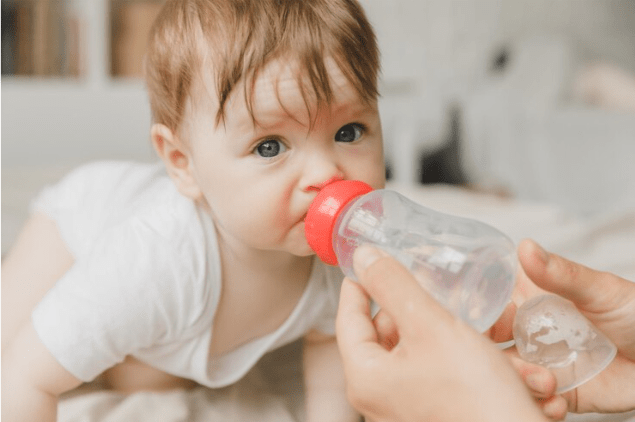Creating a child-friendly and safe environment is crucial for the well-being and development of children. “Kid proofing” is a process that involves making modifications to your home and daily routines to ensure a secure and nurturing environment for children. This comprehensive guide will cover various aspects of kid-proofing, from understanding the importance and assessing risks to implementing practical solutions in different areas of your home and life.
Understanding the Importance of Kid-proofing
Children are naturally curious and love to explore their surroundings. This curiosity, while essential for learning and development, can lead them into potentially dangerous situations. Homes are filled with hazards, from sharp corners and small objects to toxic substances and electrical outlets. Kid-proofing aims to minimize these risks, preventing accidents and ensuring that children can explore, learn, and grow in a safe environment.

Assessing Risks in Your Home
The initial step in kid-proofing is a thorough assessment of your home from a child’s viewpoint. This involves physically getting down to your child’s level—crawling or kneeling—to see the world as they do and spot potential dangers that might go unnoticed from an adult’s height. This perspective shift is crucial as it unveils hazards like small objects perfect for curious mouths, inviting electrical outlets, or sharp furniture corners. Considering your child’s age and mobility is vital; for instance, toddlers who are just starting to walk face different risks than older, more agile children. A toddler may pull on unstable furniture or put small objects in their mouth, posing choking risks. Older children might reach higher places or operate gadgets that could lead to burns or electrical shocks.
Furthermore, understanding your child’s cognitive development helps tailor your kid-proofing strategies. Younger children who can’t yet comprehend safety instructions need more physical barriers, while older children can benefit from clear rules and explanations. Common hazards that need addressing include choking hazards from small toys or items, drowning risks in bathrooms or pools, falls from stairs or furniture, burns from hot surfaces or liquids, poisoning from household chemicals or medications, and electrical hazards from outlets and cords. Assessing these risks from your child’s perspective and understanding their developmental stage is the foundation for creating a safer environment for them to grow and explore.
General Safety Measures
Secure furniture and TVs: Anchor heavy furniture and TVs to the wall to prevent tipping.
Install Safety Gates: Use safety gates at the top and bottom of stairs and in doorways to rooms with hazards.
Lock Windows and Doors: Ensure that windows and doors are secure and that children cannot easily open them.
Cover Electrical Outlets: Use outlet covers to prevent electrical shock.
Remove Small Objects: Keep small objects that could be choking hazards out of reach.
Room-by-Room Safety Tips
Living Room:
- Cushion the sharp corners of furniture with corner guards.
- Secure rugs on the floor to prevent slips and falls.
- Keep plants out of reach, as some can be toxic if ingested.
Kitchen:
- Use stove knob covers and keep pot handles turned inward.
- Store cleaning supplies and sharp objects in locked cabinets.
- Never leave a child unattended in the kitchen while cooking.
Bathroom:
- Use a toilet lock to prevent drowning and to secure the toilet.
- Set your water heater to 120°F (48°C) to prevent scalding.
- Keep medicines, razors, and other hazards in locked cabinets.
Bedroom:
- Ensure cribs and beds are safe and meet current safety standards.
- Keep cords from blinds and curtains out of reach to prevent strangulation.
- Use nightlights instead of candles to prevent fire hazards.
Childproofing Outdoors
- Ensure outdoor play equipment is safe and well-maintained.
- Fence off pools and water features.
- Check for poisonous plants and remove or fence them off.
Understanding Developmental Stages
Infants (0–12 months): Focus on creating a safe sleeping environment, preventing falls, and avoiding choking hazards. Infants are mostly stationary but can roll or crawl into danger.

Toddlers (1-3 years): This age group is characterized by curiosity and increased mobility. Secure furniture, block stairs, and eliminate small choking hazards. Toddlers love to explore and can quickly get into dangerous situations.
Preschoolers (3-5 years): Children in this age group have better motor skills but still need protection from hazards. Focus on teaching safety rules and continue to secure potentially dangerous items.
Advanced Safety Measures
Window Safety: Install window guards and stops to prevent falls from windows, balconies, and decks.
Anti-Scald Devices: Install these on faucets and showerheads to prevent hot water burns.
Carbon Monoxide Detectors: Install these near sleeping areas to alert you to this invisible, odorless, and deadly gas.
Furniture and Appliance Straps: Secure top-heavy furniture and appliances to the wall to prevent tipping.
Safe Play Areas
Creating a Dedicated Play Space: Designate a specific area for play that’s free from hazards and is well-supervised.
Outdoor Safety: Ensure outdoor play equipment is age-appropriate, well-maintained, and has a soft landing surface below.
Toy Safety: Regularly inspect toys for loose parts, sharp edges, and other hazards. Ensure that toys are age-appropriate and do not pose choking hazards.
Emergency Preparedness
First Aid Training: Be prepared for common injuries and emergencies by taking a first aid and CPR course.
Emergency Contacts List: Keep a list of emergency contacts, including poison control, near your phone or on the refrigerator.
Escape Plan: Have a fire escape plan and practice it regularly with your children, ensuring they know what to do and where to go.
Technology and Kid-proofing
Securing Electronics: Keep electronic devices out of reach, secure cords, and use outlet covers.
Internet Safety: Use parental controls and monitor your child’s internet usage to protect them from inappropriate content.
Safe Apps and Games: Choose apps and games that are appropriate for your child’s age and developmental stage.
Psychological Aspects of Kid-proofing
Creating a Positive Environment: While it’s important to protect children from physical harm, it’s also crucial to foster an environment that supports their psychological well-being.
Balancing Safety and Independence: Find a balance between keeping your child safe and giving them the freedom to explore and learn from their environment.
Stress Management for Parents: Recognize that no environment can be completely risk-free. Learn stress management techniques to cope with the anxiety of parenting.
Regular Reviews and Updates
Seasonal Checks: Review your kid-proofing measures with the change of seasons. Certain dangers may be more prevalent at different times of the year.
After Changes in the Home: If you purchase new furniture, electronics, or make any home renovations, reassess your kid-proofing measures.
As Your Child Grows: Regularly update your kid-proofing strategies to adapt to your child’s growing abilities and changing needs.
Educating Your Child
As children grow, they can understand and follow safety rules. Educate them about potential hazards and safe behavior. Use positive reinforcement to encourage safe practices and supervise them closely, especially in new or potentially dangerous situations.
Regular Updates and Maintenance
Kid-proofing isn’t a one-time task. Regularly check your home for new hazards and ensure that safety devices are in good working order. As your child grows and develops new abilities, update your kid-proofing measures to match their changing needs.
Conclusion
Kid-proofing is an ongoing process that requires vigilance, understanding, and adaptability. By assessing risks, implementing practical solutions, and educating your child, you can create a safe environment that encourages exploration and growth. Remember, while you can’t prevent every scrape or bruise, a well-kid-proofed home significantly reduces the risk of serious injuries and provides peace of mind.
Kid-proofing is a dynamic and ongoing process that evolves with your child’s growth and development. By understanding the specific needs at different developmental stages, implementing advanced safety measures, creating safe play areas, preparing for emergencies, and considering the psychological aspects, you can provide a safe and nurturing environment. Regularly reviewing and updating your approach will help maintain this secure setting as your child grows. Remember, the goal of kid-proofing isn’t just to shield children from harm but also to create a space where they can explore, learn, and grow with confidence.






